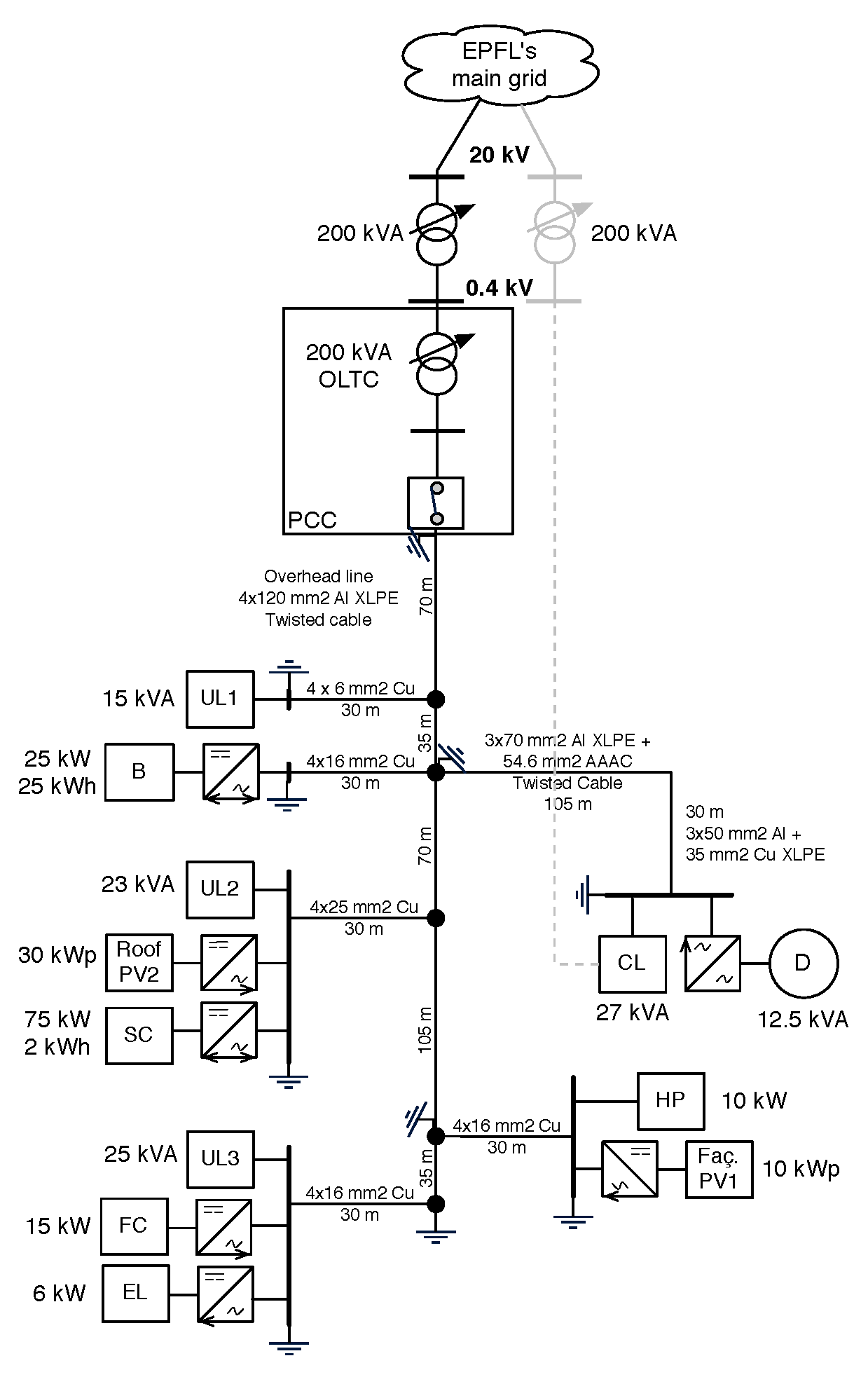With our monitoring infrastructure we keep an eye on four EPFL buildings. They are monitored with 5 medium voltage sensors and phasor measurement units (PMUs) : see it live here (username: viewer, password: viewer). We achieve a latency of only 65 ms between the moment when we sample voltage and current waveforms and the moment the estimated state is displayed.
We also keep an open record of all past measurements, for research purposes.
The DESL-LCA2 microgrid test facility
To emphasize the advantages of Distributed Generation (DG) it is necessary to face the problem with a system approach. The DESL-LCA2 microgrid facility investigates the services provided by each generator and those deriving from the co-ordination of different resources. The specific topics investigated in this facility are:
- study of the integration within low voltage networks of small-scale (kW-class) embedded generation;
- decentralized optimal control of dispatchable resources and storage systems;
- development and experimental testing of centralized optimal control strategies for the microgrid operation in normal (VPP and stand alone operation conditions) and emergency conditions (with special reference to blackouts and faults);
- management of the intentional and unintentional transition of the microgrid operation from grid-connected to islanded operation status;
- with reference to the VPP operation mode, study the behavior of the control algorithms against external networks dynamic behavior;
- comparative analysis of different storage systems technologies in terms of efficiency, dynamic performances, controllability, state of charge prediction and life cycle;
- development and implementation of control strategies of storage systems;
- advanced algorithms for the assessment of available energy in storage systems (with special reference to electrochemical storage systems);
- smart metering of microgrids;
- testing of various telecommunication infrastructures and protocols.
The first stage of the microgrid includes the following energy resources:
- 50 kW (peak) photovoltaic (PV) system, divided in two separated power plants;
- a PEM fuel cell able to provide a 15 kW electrical output and 15 kW thermal output fed by a 0.9 MWh@200 bars gaseous hydrogen storage subsystem.
- This latter should be charged with the suitable electrolyser requested by this application;
- a combined heat and power unit able to provide 12.5 kVA of electrical output and 15 kW of thermal output;
- a 25 kW – 25 kWh battery storage system based on Lithium Titanate technology;
- a 75 kW – 2 kWh supercapacitor bank;
- 3 fast dynamic AC electronic load emulators with overall rated power of 30 kVA and;
- a building thermal emulator capable of reproducing real-power absorption profiles with peak power of 55 kW;
- power grid: the devices are connected to a common low voltage network represented by the benchmark provided by the Cigré TF C6.04.02;
- a PMU-based real-time monitoring system capable to perform a low-latency high-frequency state estimation of the microgrid.
The topology of the microgrid reproduces, in real scale, the one defined by the Cigré Task Force C6.04.02 and represented here below.
